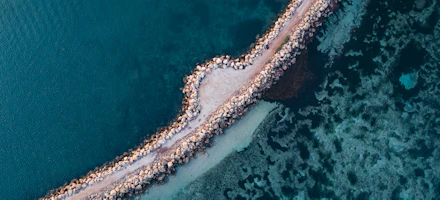
Karijini National Park
Karijini National Park is Western Australia’s second largest national park.
Covering 627,422 hectares just north of the Tropic of Capricorn in the Hamersley Range, Karijini National Park's climate can best be described as tropical semi-desert. A highly variable, mainly summer rainfall of 250–350 mm, often associated with thunderstorms and cyclones, is accompanied by temperatures frequently topping 40 degrees Celsius.
What is the best time to visit Karijini?
The ideal times to visit the park are late autumn, winter and early spring. Winter days are warm and clear, but nights are cold and sometimes frosty.
Dramatic landscapes in the park range from massive mountains and escarpments rising out of the flat valleys to the high plateau dissected by breathtaking gorges. Complimented by stony, tree-lined watercourses which wind their way over the dusty plain, erosion has slowly carved this landscape out of rocks that are over 2,500 million years old.
Karijini Gorges & Things to Do
There are many beautiful gorges and sites to visit in Karijini National Park. Be sure to include Dales Gorge, Fortescue Falls, Weano Gorge and Oxers Lookout. Park activities include camping, swimming and bushwalking, with facilities for shade, picnics, BBQs, viewing platforms and toilets.
Karijini Camping & Accommodation
There are two locations within Karijini National Park where you can stay: Karijini Eco Retreat, and Dales Campground.
Karijini Eco Retreat offers unique outback glamping (eco tents) and non-powered campsites, within walking distance from Joffre Gorge.
Dales Campground is a large campground with picnic tables and gas barbecues, and is a good base to explore from. Campsites are in high demand from June to September, and a two-night minimum stay overflow camping area is also in operation during this period.
Advance bookings are essential for all accommodation in Karijini National Park.
Karijini National Park Fees
Visitor fees apply for National Parks in Western Australia. Park passes do not include camping. Separate fees apply. For more information on park passes visit Parks and Wildlife.
Karijini Visitor Centre
The Karijini Visitor Centre is just off Banjima Drive and is open in season from 9am to 4pm daily. It is closed from early December to early February each year. The centre can provide information on park facilities, and interpretation on the natural and cultural history of the park.
To plan your visit and for important information on access, flora and fauna, safety, and Traditional Custodians of the Park, visit Parks and Wildlife Service.



























